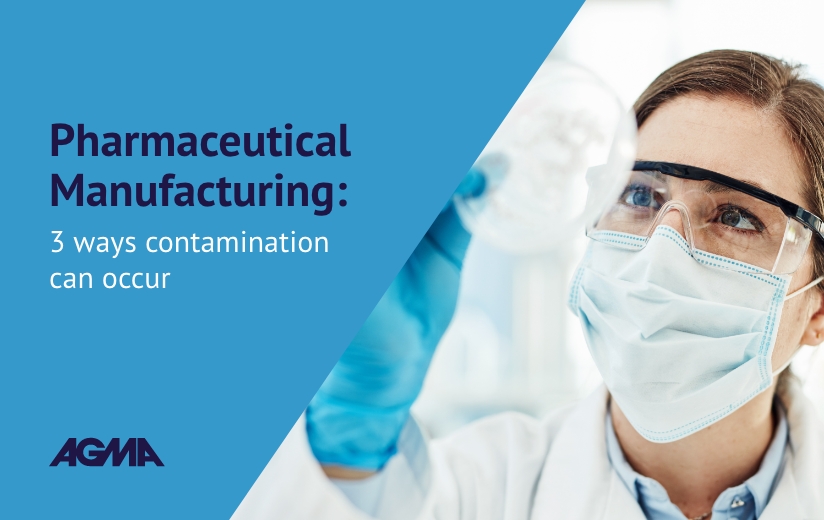When it comes to pharmaceutical manufacturing, the cleanrooms in which products are created are among some of the strictest classifications, with specialist measures to reduce the amount of particles in the air, and in turn, reduce potential contamination.
There are four contamination types:
- Microbial contamination: contagious microbes such as bacteria, fungi, yeast, and viruses.
- Particulate contamination: undissolved particles which can form as a result of a chemical reaction.
- Cross contamination: the transfer of harmful bacteria from one person or object to another.
- Environmental contamination: any physcia, chemical, or biological substance that has an adverse effect on air, water or living organisms.
So how exactly can contamination occur? While there are a number of reasons why, here are three common ways we’ve found contamination can occur, and how AGMA can help you improve your cleanroom practices.
Products
A contender for contamination can be the likes of your equipment brought inside the cleanroom. Whilst ensuring it is cleanroom-suitable and is being cleaned within your regular routine, it’s also important to remember that there can be intricate details on equipment that can be more difficult to clean and disinfect thoroughly. To ensure there is little risk of contamination, it’s important to have a CCS in place, which has been created and validated specifically to your cleanroom’s needs.
People
People within cleanrooms can be a huge cause for contamination. In fact, human beings account for over 80% of the contaminants found in these areas. This can be through a variety of things, including walking, hand gestures, talking, illness, skin particles, skin flakes, hair, cosmetics, deodorants, perfume, lotions, and clothing fibres. It can also occur through potential defects on garments, using the wrong garments, or not gowning/de-gowning properly. To ensure you and your staff are taking the right protocols, check out our blog, ‘6 tips to help you gown and de-gown safely and effectively’.
Processes
A way to minimise contamination, and to ensure control, is through your ISO cleanroom classification. It helps define environmental control by the level of airborne particulate contamination, so that effective cleaning is performed to maintain the desired standard. This can be affected by the cleaning products you use. Therefore, it’s important you use cleanroom-specific cleaning products when disinfecting as they are formulated to industry and compliance standards, and are made specifically for cleanroom hard surfaces, such as walls, floors, and equipment, etc.
For more guidance on cleaning procedures, practices and maintenance, check out our blog ‘Cleanrooms: a guide to effective cleaning practices’. For more guidance on which products you should be using, download our healthcare brochure.
Ready to improve your cleanroom practices based on the factors discussed in this blog? Go to our website to find out more about our specialised healthcare products, which are manufactured to GMP standards through our Quality Management system, which is BS EN ISO 9001:2015 certified.


